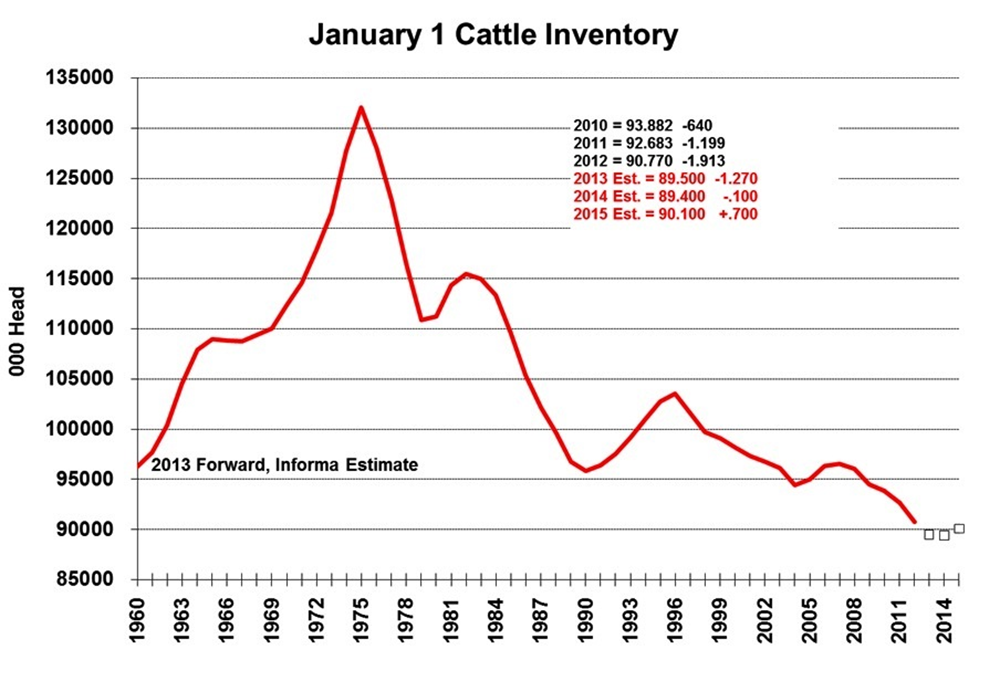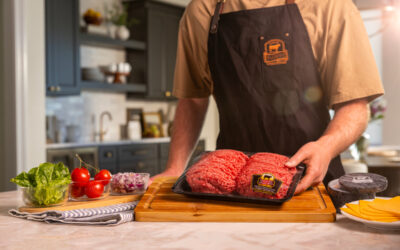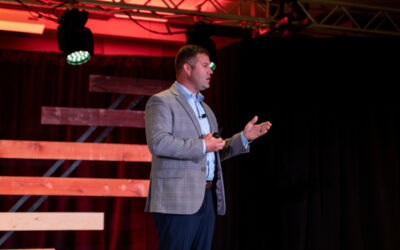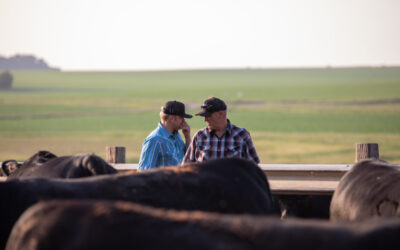
Fewer cattle, more pressure
by Miranda Reiman
Getting cattle bought right. That’s normally a feeder’s first challenge, but today it’s just plain getting cattle.
“The total size of the cattle industry has been shrinking, and shrinking rather abruptly for the last couple of years,” said Mike Sands, Informa Economics vice president.
The nation’s cowherd was at 90.8 million head to start 2012 (see chart). But as summer turned to fall, drought had hit three-fourths of that herd.
Speaking at the Feeding Quality Forum in Grand Island, Neb., and Amarillo, Texas, in late summer, Sands said he expects that to shrink another million head or more by January 2013.
“We’ve seen some extremely tight packer operator margins over the last year. That’s unsustainable. We’re looking at sizable cattle feeding losses at the present time. Those are unsustainable,” he said. “It probably boils down to some change of the structural capacity in the industry.”

Fewer cattle will eventually mean fewer yards to feed them and packers to process them.
“There’s not enough to go around,” he said. “There are going to be some empty pens. I want that guy to have an empty pen, not me.”
For the first time in five or six years, 2012 started out with some cattlemen in the central Plains retaining heifers above the previous year’s levels.
“And if the weather had cooperated, we’d probably be in the midst of cowherd [rebuilding],” he said.
But it didn’t. Forage availability trailed off as temperatures and feed prices went way up.
“Cow-calf margins obviously have shrunk,” he said. “So the incentives to hold back heifers and turn numbers around, right now, are pretty much nonexistent. Except that everybody recognizes there’s a carrot out there or a pot of gold somewhere at the end of the rainbow and, ‘I’m going to be there when this thing turns.’”
Throw in a still-sluggish economy and slower exports and the script for lower domestic beef demand has been put in motion.
“Consumers are still pretty reluctant to part with their dollars,” Sands said. “It’s going to be an ongoing challenge for us to get that beef price level up to the point where the higher cattle market works for us and for the packer.”
The U.S. has been a net exporter of beef the last two years, reaching 700 million pounds last year.

“That translates into something better than two pounds per capita that disappeared—that we didn’t have to find a home for domestically,” he said. “I think the odds are much higher over the next couple of years that we become a net importer again.”
The value of the dollar dropped about 35% in the last decade, giving U.S. beef a discount in international markets. An increase in that value, coupled with record high prices anyway, spells challenge, Sands said.
This scenario will pressure cattlemen to differentiate and form alliances.
“Not only marketing agreements with packers as a possibility, but also to access feeder cattle in terms of retained ownership programs,” he said. “We’re going to have to work out relationships to get access to those feeder cattle and calves.”
Everyone in the business is going to have to make sure the expensive product they’re touting is worth it.
“Despite declining cattle and beef supplies and rising prices, quality never goes out of style. As price levels go up, there is going to be a quality expectation,” Sands said. “You pay more for a product, you expect a different set of attributes than when it were cheaper. And as a result I think there is a quality-value relationship there that is certainly going to come to the forefront over time.”
The forum was co-sponsored by Pfizer Animal Health, Purina Land O’ Lakes, Certified Angus Beef LLC (CAB) and Feedlot Magazine. For more information or event proceedings, visit www.cabcattle.com.
You may also like
Success, Despite Challenges
Today’s market is complex and competitive. The collective effort of stakeholders across the supply chain positions Certified Angus Beef to meet the record demand for premium beef moving forward. Signals across the beef industry are clear and Angus farmers and ranchers seeking high-quality genetics that deliver premium beef are producing a product in high demand.
Consumer Demand, Power of Quality
Demand for high-quality beef persists. But with that demand comes challenges. From tight cattle supplies to higher costs and increasing pressure on retailers to deliver a consistent eating experience, the pressure is on. David O’Diam, CAB VP of retail, addressed the current retail beef environment, highlighting both opportunities and challenges in today’s marketplace.
System Over Scale
For Dallas Knobloch, it’s not about being the biggest feedyard—it’s about building a high-quality system that works. Today, with Tory’s wife Sadie and daughter Ivy, the Knobloch family owns and operates 4K Cattle. They feed 2,500 cattle at eight locations within 10 miles of home, manage 1,000 acres of crops and run a 125-head cow herd, all near Hills, Minn.



